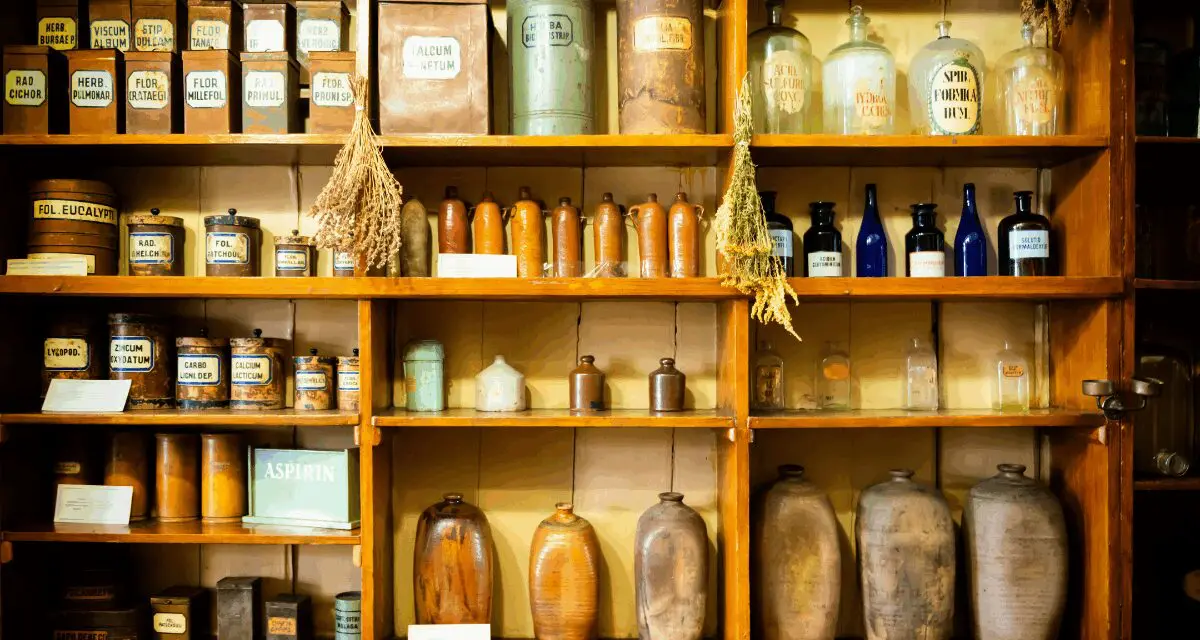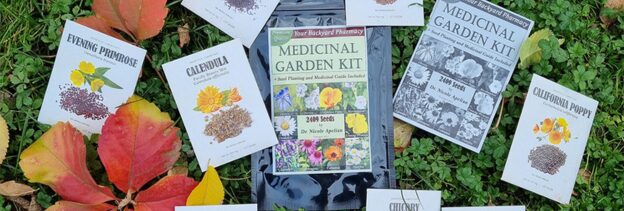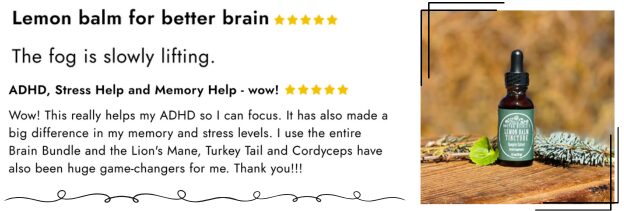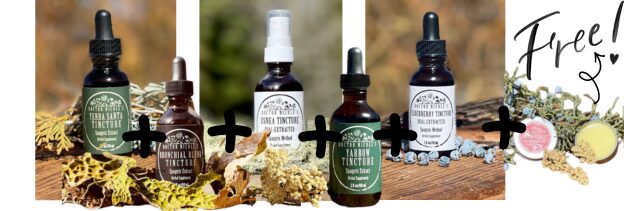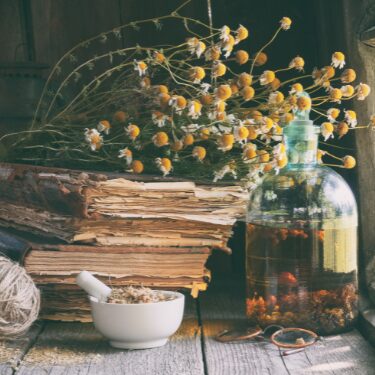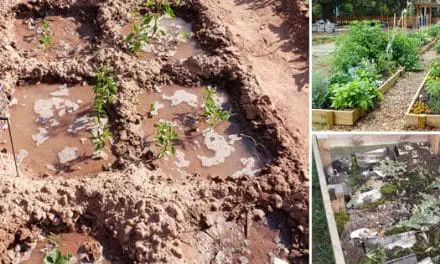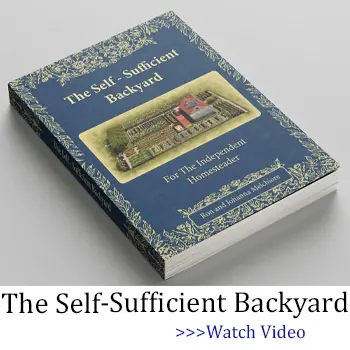For years, I prepared medicinal herbs on the kitchen counter between baking bread and washing dishes. It was inefficient and risked cross-contamination.
I needed a dedicated apothecary—a small space reserved for preparing and storing plant-based remedies. Think of it as your natural first-aid station: a spot stocked with dried herbs, soothing salves, and tinctures you make yourself to handle everything from a bee sting to a stressful day.
Planning Your Apothecary Set-up in Limited Space
Begin by claiming a specific, underutilized area you already have. An unused corner of your kitchen counter, a deep windowsill, or even the top shelf of a pantry closet can become your foundation.
The key is to assign a single, dedicated purpose to this space, which prevents your herbal supplies from spreading randomly across your home. You might even empty a single kitchen cabinet, because its doors contain the chaos and its shelves provide instant organization.
To maximize every inch, you must think vertically. A wall-mounted shelf or a tiered spice rack instantly multiplies your storage surface without consuming floor space. Stackable glass jars with airtight seals, which you can find in uniform sets, allow you to build stable, accessible towers of herbs.
For your labelling system, use a consistent method like waterproof tape and a permanent marker, writing both the common name and the Latin binomial like “Lemon Balm (Melissa officinalis)” to avoid any future confusion.
Herbs to Grow (or Buy) for a Small Apothecary
Focus your efforts on high-value, multi-use herbs that deliver maximum benefit from a minimal footprint, which means prioritizing plants you can employ for multiple purposes.
Calendula, for instance, provides vibrant flowers you can infuse into oil to create skin-soothing salves for cuts and rashes, while also brewing a gentle tea to support internal mucous membranes.
Peppermint, a vigorous grower, thrives in a confined pot on a sunny windowsill, offering leaves you can dry for digestive tea, add to respiratory steams, and use in headache compresses.
What I did was reserve a small spot in my backyard only for growing medicinal herbs I am going to use to make my poultices. I found a great kit a while ago with 4,818 high-quality, NON-GMO seeds packaged in the US and put together by a top-trusted herbalist. You can turn them into hundreds of powerful natural remedies without spending a dime at the pharmacy anymore. Here is the link of where I got it from.
If your sunlight is limited, you can successfully cultivate several potent herbs indoors. A south-facing window can sustain a small, potent rosemary plant, whose needles you can steep in vinegar for a hair rinse or infuse in honey for a sore throat.
For areas with less light, a simple, affordable grow light positioned over a shelf will robustly support lemon balm for stress-relieving teas and tulsi (Holy Basil) for adaptogenic tinctures. Lemon balm is truly a powerhouse for calming both the mind and the body, so you don’t want to miss it from your apothecary. It eases stress and anxiety, promotes deep, restorative sleep, soothes digestion, and even supports a healthy immune response.
One of the most powerful reasons to include lemon balm in your apothecary is its potential to support brain health, particularly when it comes to slowing cognitive decline. Research indicates that it can support memory, enhance focus and mental clarity, and protect brain function as we age, so it is truly an essential herb if you’re wanting to maintain sharp, alert thinking well into later life (I know I do, so not a day goes by where I don’t use it!). What’s particularly compelling is its potential role in supporting those at risk for dementia. Studies indicate that lemon balm may help reduce symptoms of memory loss, improve cognitive performance, and calm agitation in individuals experiencing early stages of Alzheimer’s. Taking just 1 to 2 milliliters of a hydroalcoholic lemon balm tincture daily has been shown to deliver these benefits consistently in people with mild to moderate Alzheimer’s disease over a period of four months. This dosage is both effective and practical for daily use, offering a straightforward way to incorporate lemon balm into your routine.
However, if you’re kind of new to this, growing enough lemon balm in a small, low-light space can be frustrating, time-consuming, and expensive, especially if you’re constantly buying new plants or struggling to harvest enough leaves. On top of that, turning lemon balm into a tincture is tricky for beginners: the leaves bruise easily, potency depends on getting the right herb-to-alcohol ratio, and steeping too little or too long can result in a weak or overly bitter tincture.
So, if you’re just starting out in making your own remedies at home, I recommend using a ready-made tincture like this one at first. This tincture contains only pure lemon balm, and it’s double-extracted to capture both the water-soluble and alcohol-soluble compounds, ensuring maximum potency. It’s ready to use immediately, so your apothecary stays effective while you gain confidence and experience with making your own homemade remedies without wasted money, failed batches, or guesswork.
To preserve your harvest without a large dehydrator, you can hang small bunches of herbs like thyme or oregano from a tension rod in a warm, dark closet, or you can use your oven on its lowest setting with the door slightly ajar to slowly dry spread-out leaves.
Freezing chopped herbs like chives in ice cube trays with water offers another compact preservation method, locking in freshness for later use in poultices or infusions.
Essential Tools and Supplies You’ll Need
You need only a few core tools to begin crafting effective remedies, and each one serves a distinct, non-negotiable purpose.
A heavy mortar and pestle, preferably made from granite or ceramic. This allows you to properly crush dried herbs and seeds to release their active compounds, a step you cannot skip if you want potent infusions.
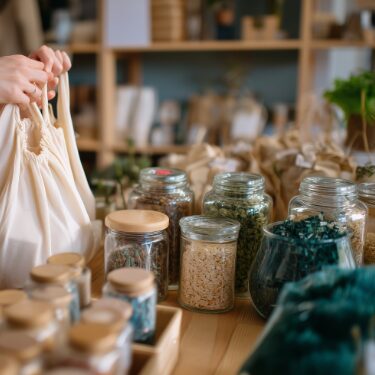
Glass jars with tight-fitting lids in various sizes—4-ounce to 32-ounce—are your primary vessels for storing dried plant material and creating oil infusions and tinctures.
You will also require a small digital scale, a set of stainless steel droppers, and a fine-mesh strainer or unbleached cheesecloth for filtering your creations. Storing these tools efficiently demands creativity in a small footprint.
Install a magnetic knife strip on a wall or the side of a cabinet to securely hold your metal measuring spoons, funnels, and even scissors.
A small, repurposed tackle box or a tool organizer with multiple compartments becomes a perfect portable station for your droppers, labels, and other tiny accessories, keeping them from getting lost in a drawer.
Crafting and Storing Remedies in Tight Quarters
You can produce a full range of medicines without dedicating an entire kitchen to the process by adopting compact, integrated methods. To dry herbs, forego a bulky dehydrator by using a simple mesh screen elevated on books or blocks, which creates air circulation on a shelf or in a closet.
For infusing oils, a solar infusion is your most space-efficient technique; just fill a jar with herbs and oil, seal it tightly, and leave it on a sunny windowsill for 4-6 weeks, shaking it daily.
When making tinctures, your same canning jars do double duty as maceration vessels, and you can strain them later using a mesh strainer lined with cheesecloth held over a bowl.
Creating salves in a small space is easiest if you use a double-boiler method with a heatproof glass measuring cup placed in a small pot of simmering water, allowing you to melt beeswax and blend it with your infused oils without needing a dedicated saucepan.
To store your finished remedies, you must implement a rigorous labeling system on every bottle and jar; write the contents, the date of creation, and the dosage directly on the lid with a permanent marker, because faded or lost labels render a remedy useless and potentially dangerous.
Use the inside of a cabinet door to tape a master list of your inventory, noting what you have, where it is, and when it expires, ensuring you rotate your stock effectively and never lose track of a single bottle.
While it’s rewarding to craft every remedy yourself, even a well-stocked apothecary has its limits if you’re really short on space, and sometimes there just isn’t room to dry, infuse, and store everything you’d like for the season. Timing and preparation become critical especially as the cold and flu season gets closer, when you can’t afford to wait for herbs to dry or tinctures to steep.
What I usually do this time of the year is order this bundle put together by a top-trusted herbalist. It includes five powerful, double-extracted tinctures that cover all the bases for immune and respiratory support. As a bonus, the bundle also comes with a free full-size All-Purpose Salve that’s perfect for everything from cuts & scrapes to skin irritations, so you get an extra layer of protection without paying a single extra penny.
If you tried to recreate this at home, buying each tincture individually could easily cost well over $200, and a quality salve would add even more. If you want to make all of your tinctures from scratch, buying the seeds, plus the alcohol, jars, droppers, and labels needed could easily cost you $100–$120 or more. Growing and drying them yourself could also take weeks of time, plus the expense of soil, pots, grow lights, and supplements. That’s an immediate saving of over $150, plus the time and frustration you avoid by not doing everything yourself.
This bundle delivers everything in one single smart, cost-effective package, saving you hundreds of dollars and countless hours. It’s not just a space and time-saver, it’s a smart investment that ensures your apothecary is fully stocked and ready for the season, without emptying your wallet. This is the trusted source I always get it from.
Small-Space Storage Hacks Most Homesteaders Overlook
To truly maximize your small apothecary, you need to think creatively about every available inch of space. Look beyond traditional shelves and consider the forgotten real estate in your home.
The back of a pantry or closet door, for example, is the perfect place for a hanging shoe organizer; its clear pockets are ideal for storing small bags of dried herbs, tools, or bottles.
You can also use tiered shelves inside your existing cabinets to instantly double your storage capacity, allowing you to see and access jars at the back more easily.
Think about upcycling items you might already have. An old wooden toolbox can be cleaned up and used to organize your salves and tinctures, giving your apothecary a rustic feel.
A vintage spice rack can be mounted on the wall to hold your most frequently used herbs, keeping them within arm’s reach. You might even find hidden storage potential inside your furniture, like an unused drawer in a side table or a space under a staircase.
By looking at your home with fresh eyes, you will find plenty of clever nooks to tuck your herbal supplies away.
Scaling Up When You Outgrow Your Small Space
Transitioning to a larger setup does not have to be a major overhaul. It could be as simple as dedicating an entire closet to your apothecary, adding floor-to-ceiling shelves to maximize the vertical space.
Or you might decide to claim a larger bookshelf in a main living area. As you expand, take the opportunity to reassess your inventory. Go through your herbs and supplies, and be honest about what you actually use.
This will help you keep your collection practical and prevent you from simply filling a bigger space with clutter.
Start Your Own Apothecary, No Matter How Small Your Space
You don’t need a sprawling garden or a walk-in pantry to take control of your health. Even in a tiny apartment or a small kitchen, you can create your own home apothecary that gives you real independence from over-the-counter pills and chemical-laden creams.
With just a few jars, some dried herbs, and some simple recipes, you can make powerful remedies right at home: tinctures to boost immunity, salves to soothe pain, teas to calm stress, and syrups to fight infections.
The Forgotten Home Apothecary is the ultimate guide to replacing chemical-laced, pharma-dependent products with powerful, time-tested remedies you can make at home.
You’ll learn exactly how to make your own tinctures, capsules, oils, teas, salves, elixirs, syrups, and poultices from plants you can find growing around you — or already in your kitchen.
These are not “Pinterest cures” or folk tales. These are battle-tested remedies used by herbalists, survivalists, and those who want real protection when nothing else is available.
Inside, you’ll discover powerful remedies like:
 Memory Elixir – made with rosemary to help restore clarity, focus, and short-term memory
Memory Elixir – made with rosemary to help restore clarity, focus, and short-term memory
 Painkiller in a Jar – crafted from wild lettuce, known as “nature’s opium” but legal, safe, and non-addictive
Painkiller in a Jar – crafted from wild lettuce, known as “nature’s opium” but legal, safe, and non-addictive
 Nature’s Amoxicillin – a plant-based antibacterial formula to help fight infections and boost immunity
Nature’s Amoxicillin – a plant-based antibacterial formula to help fight infections and boost immunity
 Medicinal Herbal Smoking Blend – designed to clear lungs and soothe inflammation with mullein and other wild herbs
Medicinal Herbal Smoking Blend – designed to clear lungs and soothe inflammation with mullein and other wild herbs
 Heavy Metal Detoxifier – flushes out mercury, aluminum, and lead from your bloodstream using safe, herbal chelators
Heavy Metal Detoxifier – flushes out mercury, aluminum, and lead from your bloodstream using safe, herbal chelators
 Herbal Parasite Flush – a powerful three-ingredient recipe to eliminate worms and cleanse your gut
Herbal Parasite Flush – a powerful three-ingredient recipe to eliminate worms and cleanse your gut
 The Backyard Aspirin – learn to use willow bark like early apothecaries did — it works like real aspirin, without the synthetic junk.
The Backyard Aspirin – learn to use willow bark like early apothecaries did — it works like real aspirin, without the synthetic junk.
And that’s just the beginning.
 Click here to get The Forgotten Home Apothecary before it’s gone. Limited edition. Real remedies. No chemicals.
Click here to get The Forgotten Home Apothecary before it’s gone. Limited edition. Real remedies. No chemicals.
Natural Remedies From The Amish
How To Build A Never-Ending Pharmacy In Your Backyard (Video)
12 Native American Remedies That We Lost To History
10 Natural Remedies for Common Livestock Ailments

